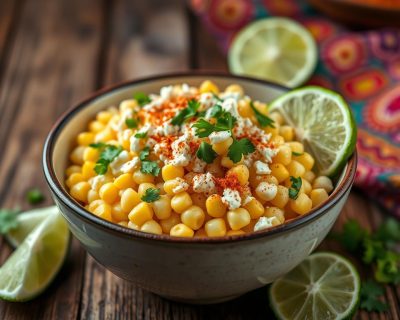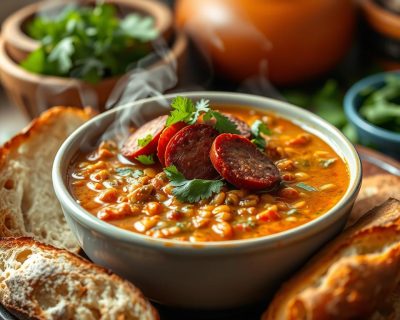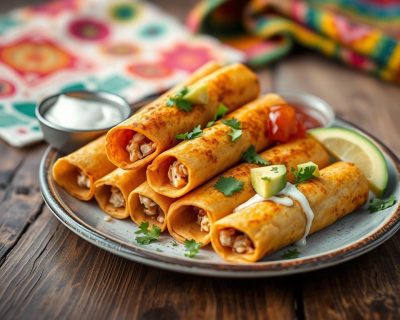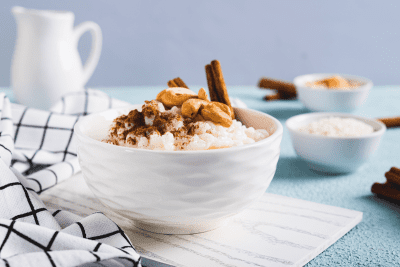What Is Hominy Corn and How to Cook Hominy for Delicious Dishes
Discover the versatility of hominy corn! Learn about hominy kernels, how to cook with dried hominy, and create delicious vegan soups and dishes.


What Exactly Is Hominy Corn and How to Cook It for Delicious Dishes
I’ve grown fond of incorporating Nixtamalized corn into my cooking because it proves so versatile—perfect for hearty stews, flavorful casseroles, and everything in between. Before we dig into how to cook hominy, let’s take a moment to explore what is hominy and how it differs from your typical sweet corn or corn on the cob.

Chef’s Tip: 🥒 Pat your veggies completely dry before mixing to prevent excess liquid that might dilute the tangy dressing.
Pro Advice: 🌽 Rinse Nixtamalized corn thoroughly under cool water. Canned kernels may have brine, so a quick rinse helps maintain a crisp, clean flavor.
What Is Hominy and How Is It Made?
Producers craft Nixtamalized corn from maize—specifically field corn—using a process called nixtamalization. You might wonder, “exactly is hominy?” and “Does it taste like normal corn?” In reality, they soak and treat the corn in an alkali solution—often lime or sometimes lye—to transform its texture and flavor.This softens the tough outer hull and germ, making the kernels of corn easier to digest and giving them a chewy, puffy texture. Interestingly, producers create hominy by soaking whole corn kernels in an alkaline bath, which makes them easier to grind or cook.
- Easy Shrimp Ceviche Recipe: The Best Ceviche You Can Cook at HomeFebruary 20, 2025
- Delicious Sopa de Fideo Recipe | Authentic Mexican Noodle Soup GuideFebruary 15, 2025
Origins of Nixtamalized corn
Many cultures around the globe have their own versions of Cooked maize. In some regions, people refer to a similar product as samp, whereas in others, the dish is a staple for making tamales, corn tortillas, or masa flour. In Mesoamerica, the indigenous peoples who spoke Nahuatl advanced the process of nixtamalization, discovering that this technique increased the nutritional profile of corn by releasing vitamin B3 (niacin). This traditional mexican practice turned plain maize into something far more nutritious.
The Process of Nixtamalization
Nixtamalization might sound scary as it sounds, but it’s straightforward. Processors soak whole corn in an alkali solution—usually water and lime—to loosen the hull. This technique tenderizes the kernels, and the final product can be finely ground into masa for tortilla dough, tamales, or other beloved Latin American dishes. Essentially, nixtamalization is what allows Cooked maize to develop that signature earthy taste and meaty texture that so many of us love in a mexican stew or a hearty side dish.
Difference Between Corn and Hominy
Curious about the difference between corn and hominy? When you eat fresh or sweet corn, you’re biting into kernels still protected by that tough outer coating. In contrast, manufacturers process Cooked maize to remove its hull. As a result, Nixtamalized corn has a chewy consistency and an earthy flavor, rather than the sweeter profile of standard corn on the cob. If you want to use hominy in place of typical corn, you get a hearty, more substantial bite that can thicken soups or stews.
How to Cook Dried Hominy and Canned Hominy
The good news is, once you learn a few methods to cook hominy, you’ll see just how simple it can be to incorporate it into your meals. Personally, I love using Nixtamalized cornin place of other starches—if you often cook dried beans, you’ll feel at ease preparing dried hominy kernels, too.
Methods to Cook Dried Hominy
To cook dried hominy, you can treat it much like you would dried beans:
- Soak Overnight: I like to soak the dried hominy overnight before cooking. This shortens the cooking time and helps each kernel cook evenly.
- Stovetop Stew Approach: Use about 4 cups of water for every cup of dried Nixtamalized corn. Bring it to a boil, then reduce the heat to low and simmer until the kernels are tender—this can take 2-3 hours, depending on the kernels and your desired texture.
- Add Flavor: Toss in aromatics or seasonings if you like. Lime juice, bay leaves, onions, or garlic can really enhance the taste.
Using a Slow Cooker for Hominy
If you have a cooker, like a slow cooker or Crock-Pot, you can easily set up cooking with dried hominy while you go about your day:
- Pre-Soak: Soak the dried hominy kernels overnight, then drain.
- Add Liquid: Place them in the slow cooker with enough water or broth to cover by a couple of inches.
- Low and Slow: Cook on low for about 6-8 hours, or until kernels are tender. This is my go-to method when I want a big pot of posole or hearty soups with minimal effort.
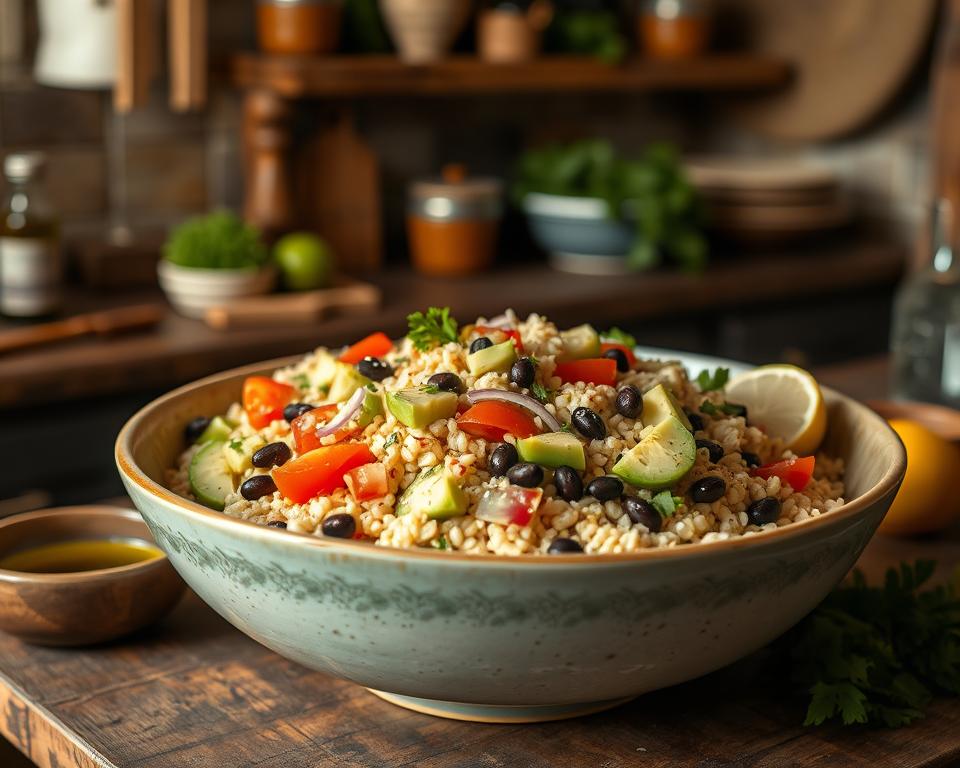
Expert Trick: 🥑 Add avocado last and toss gently. Its soft texture can break down quickly, so light stirring preserves those perfect, creamy cubes.
🔥 Quick Tip: 🍋 For extra tang, zest your lime before juicing. A little zest adds a bright pop of citrus to the entire salad.
Quick Tips for Preparing Canned Hominy
Manufacturers pre-cook canned Nixtamalized corn, so it offers a convenient choice for busy weeknights. All you need to do is:
- Drain and Rinse: Remove the canning liquid to avoid any overly salty flavor.
- Warm and Season: Heat in a pan or pot with spices, or add it directly to soups and stew recipes.
- Use in a Hurry: It’s perfect if you’re creating a quick side dish, like a casserole or chili.
What Does Hominy Taste Like?
So, what does hominy taste like? People often ask if it’s just like corn or if it has a special flavor.
Texture and Flavor Profile of Hominy Corn
Hominy has a puffy, somewhat chewy texture and a mild, earthy flavor, which can absorb other seasonings beautifully. It’s less sweeter than fresh corn, but it has a deep corn flavor that stands out in everything from soups to casseroles. Some say it has a slight grit to it when bitten into, but that’s part of its charm.
Comparing Hominy Taste with Corn
If you’re accustomed to biting into crisp, juicy kernels of fresh corn, you may find the texture of these nixtamalized grains surprisingly different. But once you understand that this processed maize comes from corn treated in a specific way, you realize it’s not trying to replace fresh corn on the cob. Instead, these puffed kernels stand as their own culinary star, offering a hearty bite that can thicken a stew or add substance to a dish like hog & hominy soup.
The Impact of Nixtamalization on Taste
Remember, nixtamalization helps release niacin (also known as vitamin b3) from the corn, boosting nutritional value. Because of this chemical transformation, the flavor becomes more earthy and the kernel becomes less tough. That’s why using hominy instead of standard kernels in a recipe results in an entirely different taste.
Ways to Use Hominy in Your Recipes
Because has a meaty texture and chewy bite, it’s one of my favorite go-to ingredients. Let’s take a closer look at some possibilities.
Popular Recipes
Hulled cornpairs well with a variety of dishes—particularly soups and stews. I love it in posole (yes, spelled “pozole” or “posole”), a traditional mexican favorite. You could also add it to a casserole for extra body. If you’re feeling adventurous, you might explore:
- Homemade Gorditas Recipe: Gorditas use masa flour, often derived from Nixtamalized corn. They’re delicious pockets you can stuff with almost anything.
- Traditional Mexican Huaraches: Another treat made from masa, topped with beans, meats, or veggies.
- Esquites (Mexican Street Corn Salad): While this usually uses sweet corn, adding a bit of Hulled corncan twist the flavor in a fun way.
- Green Chilaquiles: A dish involving tortilla chips simmered in salsa. You can top it with Corn kernels without hull for an unusual but tasty variation.
Incorporating in Soups and Stews
The robust nature of Nixtamalized corn makes it perfect for soups and stew recipes, including:
- Mexican stew like posole, where hominy is a star ingredient.
- Chili variations, especially if you want to boost texture.
- A side dish with leftover hominy, simply tossed with veggies.
Creating Tasty Hominy Side Dishes
Sometimes you just need an easy side. These nixtamalized kernels work wonderfully in simple sautés with onions, garlic, and maybe some bell peppers. If you want something a bit different, a lightly spiced treated grains salad can bring a pleasant corn flavor to the table. Since Hulled corn grits vs polenta is a hot debate for some, you might also enjoy trying homemade grits prepared with puffed corn, which gives a wonderful consistency.
Exploring the Types of Hominy: White, Yellow, and More
You’ll encounter Dried maize kernels in yellow or white varieties—both are basically the same type of maize, just with different natural pigments. In fact, you can even find hog & hominy restaurant specialties featuring both colors.
The Differences Between White and Yellow Hominy
When it comes to white hominy versus yellow hominy, the main difference is color and a subtle flavor variation. White tends to be a bit milder, while yellow may have a slightly stronger corn flavor. Producers use field corn (a type of maize) to create both varieties through specific processing methods.
Choosing the Right Hominy Type for Your Dish
Deciding which maize to use often depends on personal preference. If you love a sweeter note, go for yellow. If you want a more neutral palette, pick white. Either way, you’ll get that hearty bite. Sometimes, restaurants like hog and hominy or hog & hominy highlight both types in their dishes.
Using Whole Hominy and Corn Kernels
Another distinction lies between fully nixtamalized kernels and corn still in its hull. Once you soak and cook the dried version, you get tender grains you can serve or grind. You can also turn that same product into masa for corn tortillas. If you prefer not to tackle the entire process from scratch, you can easily find the canned form at most grocery stores.

Chef’s Tip: 🌿 If you’re out of cilantro, swap in parsley or a small handful of chopped basil. The herbal hint still provides freshness without changing the essence too much.
Pro Advice: 🌶️ Spice lovers: throw in a diced jalapeño or serrano pepper. This subtle heat balances well with the sweet chew of Nixtamalized corn.
Table: Different Forms of Hominy and Their Uses
| Form | Description | Common Uses |
|---|---|---|
| Dried | Uncooked, kernels are soaked in an alkali solution, then dried | cook dried hominy for soups, stews, or sides |
| Canned | Already cooked, ready to use | Quick additions to salads, soups, or casseroles |
| Cracked | Also called “grit” or partial kernels | Used for hominy grits or as a breakfast cereal |
| Hominy Flour (Masa) | Finely ground to make masa, corn flour, or cornmeal | Ideal for tortillas, tamales, or thickening soups |
(Note: People usually create masa by fully nixtamalizing the Dried maize kernels and then grinding it.)
Frequently Asked Questions about Hominy
❓ What is hominy?
Is dried corn that has been treated with an alkali process called nixtamalization, which enhances its flavor, texture, and nutritional profile.
❓ Is hominy healthy?
Yes! is a good source of fiber, vitamins, and minerals. It is naturally low in fat and can be part of a balanced diet.
❓ Is hominy good for you?
Yes, provides essential nutrients like B vitamins, iron, and fiber, making it a nutritious addition to soups, stews, and side dishes.
❓ How is hominy made?
Is made by soaking dried corn in an alkaline solution, which removes the hull and softens the kernels, making them easier to cook and digest.
❓ What are hominy grits made from?
Hominy grits are made by grinding hominy into coarse pieces, creating a creamy and hearty dish that is popular in Southern cuisine.
❓ Is hominy fattening?
No, is naturally low in fat and contains fiber, which helps with digestion. However, calorie content depends on preparation methods.
❓ Is hominy corn?
Yes, is a type of corn that has undergone nixtamalization, a process that enhances its nutritional value and gives it a distinct texture.
❓ How to cook hominy?
Can be simmered in water or broth until tender. It is commonly used in dishes like pozole, grits, and casseroles.
❓ Can dogs eat hominy?
Yes, dogs can eat plain, cooked hominy in moderation. Avoid serving it with added salt, spices, or seasonings that may be harmful.
❓ Is hominy gluten-free?
Yes! is naturally gluten-free since it is made from corn. However, check for cross-contamination in processed varieties.
❓ Where to buy hominy?
Is available in most grocery stores, Latin markets, and online retailers. Look for canned or dried maize kernels in the grains or international foods section
© 2025 Hominy
Conclusion
Discovering Nixtamalized Kernels
For me, discovering these nixtamalized kernels was a bit of an adventure—from seeing it on the menu at a local diner to experimenting with my own recipes at home. Whether you’re curious about blastocystis hominis and mycoplasma hominis (don’t mistake them for the corn itself!), or you simply want to recreate a stew from hog & hominy restaurant, these puffed grains can truly elevate your kitchen creations. Personally, I love how they add a chewy bite to all sorts of dishes, from posole to other hearty soups.
A Vegan-Friendly, Culture-Spanning Ingredient
Believe it or not, even mention of dermatobia hominis has crossed my path in random reading, but let’s focus on the culinary side for now. If you’re a vegan eater or simply looking for a plant-based alternative, this processed maize can fit right in. Producers create it from maize, typically white or golden, and they rely on nixtamalization—a tradition rooted in many cultures—to transform the kernels. There’s even a Hominy Hill Golf Course in some parts of the United States—but that’s another story entirely!
Next Steps for Your Kitchen
So, the next time you’re browsing the grocery store or planning your menu, consider picking up a bag of dried nixtamalized corn or a can of fluffy kernels instead of standard corn flakes. No matter if you choose white or yellow hominy, you’ll find many recipes that let you experiment with this versatile ingredient. The best part? Your final creations will likely be hearty, comforting, and full of that signature corn flavor.
Key Takeaways
- Hominy comes from corn treated with an alkali solution, typically lime or lye, removing the tough outer hull.
- People refer to this technique as nixtamalization, and it releases nutrients like vitamin b3 (niacin).
- Hominy kernels have a chewy, earthy flavor, making them a hearty addition to soups, stew, or a side dish.
- You can cook dried hominy or use canned —both are excellent in posole, chili, or a cozy casserole.
- Popular forms include dried, canned, cracked, or flour (masa) for tamales and corn tortillas.
- Don’t be afraid to explore creative ways to use maize from salad toppings to big bowls of stew, there are countless ways to use this ingredient.
Expert Trick: 🍅 Keep seeded and diced tomatoes from getting mushy by draining them on a paper towel briefly before adding to the bowl.
🔥 Quick Tip: 🏺 If you want this salad for meal prep, store the dressing separately. Just before serving, add the lime juice and oil to keep vegetables crisp.
More Corn and Masa-Based Recipes to Explore
If you’re as excited about corn-related dishes as I am, check out these links for more meal ideas (all dofollow for your convenience):
- Homemade Gorditas Recipe
“Master the art of making thick corn cakes filled with various delicious fillings.” - Traditional Mexican Huaraches
“Thick corn masa cakes topped with beans, meat, and fresh toppings.” - Esquites (Mexican Street Corn Salad)
“A delightful corn salad mixed with cheese, lime, and chili powder.” - Green Chilaquiles
“Tortilla chips simmered in green salsa, topped with eggs and cheese.” - Mexican Crema
“A rich and tangy cream perfect for drizzling over Mexican dishes.” - Easy Chicken Flautas
“Crispy rolled tacos filled with seasoned chicken and cheese.” - Camarones a la Diabla
“Spicy shrimp cooked in a fiery red sauce.” - Churro Cheesecake Bars Recipe
“Combine the flavors of churros and cheesecake in this easy dessert bar.”
Chef’s Tip: 🥢 A gentle folding motion when mixing prevents smashing the avocado and keeps everything fresh and intact.
Pro Advice: 🥬 Turn this into a hearty main by tossing in baby spinach or romaine for a Nixtamalized corn salad “bowl.” Top with grilled proteins for a wholesome lunch!
From hearty grits breakfasts to luscious tamales and beyond, this ingredient truly stands as a cornerstone in many cuisines—especially those that rely on maize as a foundational staple. Go ahead and experiment with leftovers, cracked grains, or the whole variety in your own kitchen, and discover just how satisfying and versatile it can be!

Cold Hominy Salad
Equipment
- Cutting board
- Sharp knife
- Colander
- Large mixing bowl
- Wooden spoon or spatula
Ingredients
- 2 cups of hominy canned, drained, and rinsed
- 1 cup diced tomatoes
- 1 cup diced cucumber
- ½ cup finely chopped red onion
- 1 ripe avocado cubed
- 2 tablespoons chopped cilantro
- 2 tablespoons freshly squeezed lime juice
- 2 tablespoons olive oil
- Salt and pepper to taste
Instructions
- Place the rinsed hominy in a large bowl.
- Add the tomatoes, cucumber, red onion, and avocado.
- Sprinkle the cilantro on top and stir gently.
- Drizzle in the lime juice and olive oil, then mix to combine flavors.
- Season with salt and pepper.
- Serve immediately or chill briefly for an extra-refreshing taste.
Video
Notes
- Add spice 🌶️ by tossing in diced jalapeños or a drizzle of hot sauce.
- Try a fruity twist 🍍 with chopped pineapple or mango for a sweet-savory combo.
- Mix in grilled chicken or shrimp 🍗🦐 for a heartier option.
- Keep it vegan 🥦 by skipping any meat add-ins and adding extra veggies like bell peppers.
Nutrition
Nutrition Disclaimer
The Chef Marcy is not a dietician or nutritionist, and any nutritional information shared is an estimate. If calorie count and other nutritional values are important to you, we recommend running the ingredients through whichever online nutritional calculator you prefer. Calories can vary quite a bit depending on which brands were used.





